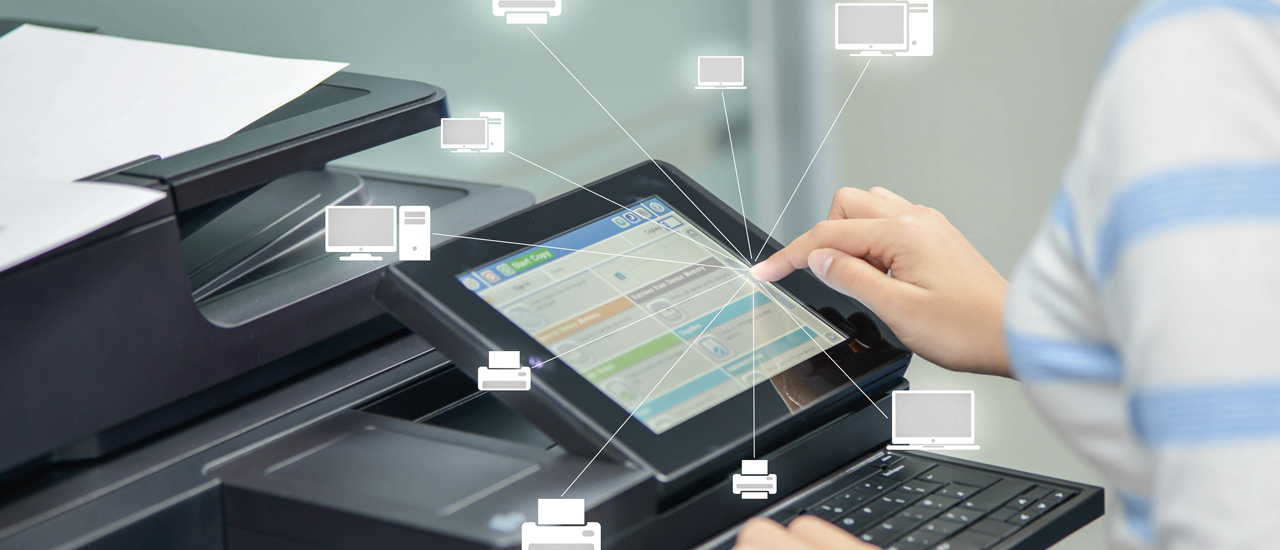

By Jamie Scott, Chief Technology Officer
It is clear that businesses today still need photocopies from time to time. Much less is printed today than in the past. Printing is no longer a core function, and digital media is slowly replacing traditional paper products. From purchase orders, contracts, invoices, meeting minutes and more, everything used to need to be printed.
Today's meeting uses interactive whiteboards and large-screen projectors instead of notes to share numbers and statistics, and meeting notes are emailed later. Even travel boarding passes no longer need to be printed, as they can simply be downloaded electronically onto our smartphones and scanned from there.
Less dependence on printing
A quantum shift
No more expensive contracts
Follow me printing
Managing printing more effectively
The pandemic also highlighted our lessening dependence on printing. Initially, a few contracts and other important documents might have needed to be signed, scanned, and sent back, but not much more. Inevitably most businesses implemented DocuSign or another digital signature tool.
Digital signature solutions are signing software that businesses can use to sign and send documents online. In this way, they legally and securely replace paper-heavy, manual signing processes, boosting productivity, and eliminating the need for printing.
While it will never be the economic money spinner it once was, there will always be a place for printing in the office. In fact, Tarsus Distribution is investing quite heavily in the printing industry because although the market is consolidating, as a company we are still experiencing growth.
We are also seeing a quantum shift happening in printing contracts. In the past, large corporates such as banks would go and sign large copy contracts with one of the top photocopier providers and install lots of these large A3 based machines around the office with one or two in every department and branch office, and users would print and copy what they needed to.
However, no one really knows the cost of one of these machines, it’s one of the best-kept secrets in the industry. Nobody actually knows the price because people pay a set number of cents per page, and that includes maintenance costs, toner, paper and depreciation on the device itself.
Most of these copiers were capable of printing up to size A3, but in reality, most office users will never need to print anything this size, and most companies probably do not even stock A3 paper any longer. And yes, big photocopiers are capable of document scanning, document management and a range of value-adds around merely photocopying, but these contracts are expensive.
When everyone went to work from home during the pandemic, these contracts became an issue, because despite what kind of a contract a business had, and irrespective of whether it was using the printer, it was still being hit with the minimum billing, and paying for a service it wasn’t using.
Having large photocopy contracts in place no longer made sense, particularly as even post-pandemic, print volumes were nowhere near where they used to be. It is far more feasible for any business to buy industry standard Multifunction laser printers and locate them around the office to be shared on a ‘follow me printing’ basis.
In a nutshell, follow me printing is a network print queue that does not automatically route a print job to a specific printer, but rather holds that job until the user authorises it for printing at a network printer of their choice.
This eliminates the need for fancy maintenance contracts should the printer go down, as well as the inconvenience of not being able to print for several days while waiting for a technician to be freed up. Even better, there is a range of cloud-based management applications, such as PaperCut, that allow users to activate the printers at the office and release a print job with a fingerprint, a pin number, or an access card.
Yes, the cost per copy is a little steeper, but businesses are not printing as much as they used to, and users can simply walk up to any printer they want and release the print job. If a particular printer in front of a user’s desk is broken, they can walk another few steps down the passage and print on the next one.
In addition, the cloud-based management software will do all the work, telling users which printers are busy all the time, and enabling them to effectively distribute their printing resources throughout the office.
Instead of having giant photocopiers on every floor, businesses can purchase fewer, less expensive, smaller printers with a standard manufacturers onsite warranty and can manage their printing fleet more effectively. The effects of people printing less, coupled with cloud-based management software is leading to a quantum shift in printing that means customers don’t need to over-invest in printing solutions anymore.
So, while the photocopier isn’t quite dead, there are viable alternatives that address your future printing anddocument management needs. Today’s digital world means businesses need to be leaner and less wasteful, and there’s no better place to start than by eliminating expensive photocopiers.

© Copyright 2024 Tarsus Distribution